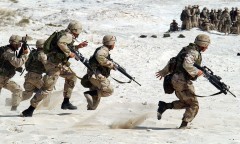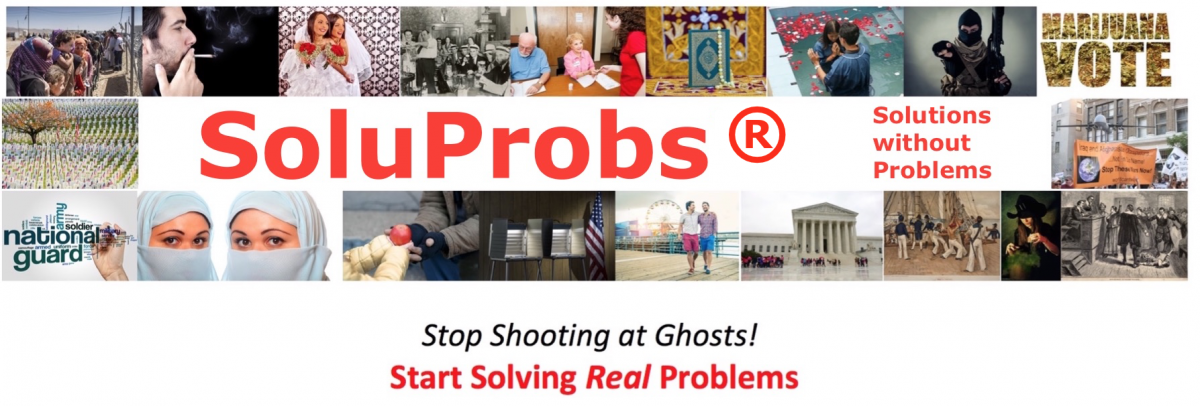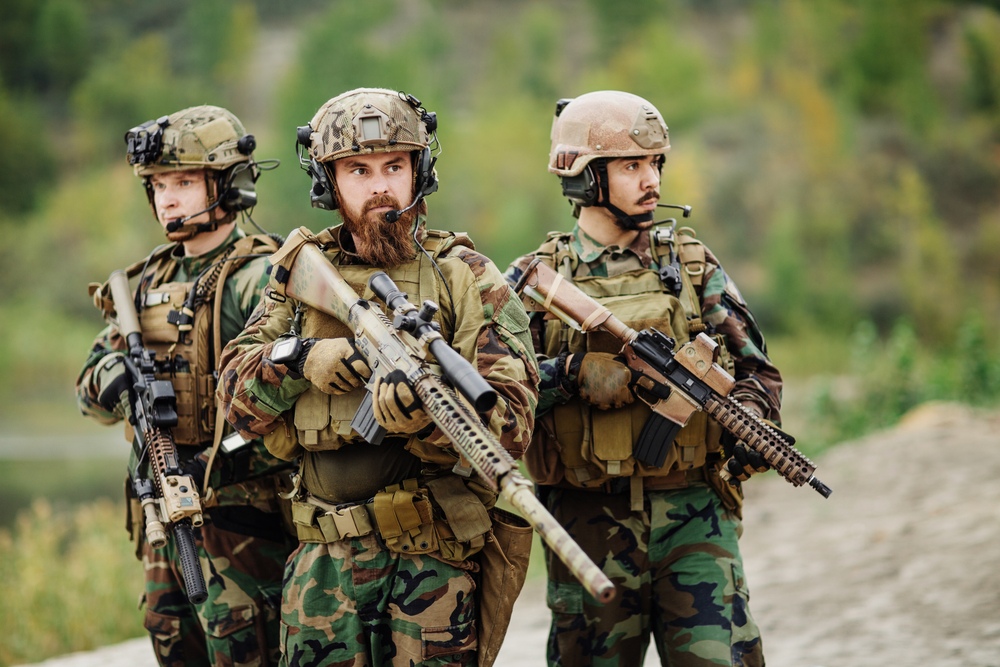Student Author
Kunal Sharma, Chapman University
NOTE: Student submissions of soluprobs are welcomed at babbie@chapman.edu
The Presumed Problem
This paper will examine the fundamental reasoning of opposition many Americans and legislators had towards gays serving in the military, and whether those notions had any basis whatsoever. While one can simply guess whether personal ideals or even political affiliation plays a role in one’s opinions towards the issue, the official reasoning according to Title 10 of the United States Code (which has since been repealed) concluded that homosexuals “would create an unacceptable risk to the high standards of morale, good order and discipline, and unit cohesion that are the essence of military capability”.
Solution to the Presumed Problem
Many times taxpayer money has been wasted funding policy proposals that claim to “fix” a supposed but nonexistent problem. Many times these solutions have done more damage than good. In an effort to block homosexuals from assimilating into our armed forces, the Clinton  Administration enacted the “Don’t Ask Don’t Tell” (DADT) policy, which mandated that openly homosexual citizens were barred from enlisting while those who remained closeted were able to serve contingent that they keep their orientation private. Reasoning behind this inequitable act included undocumented perceptions on gays lacking the ability to work and interact productively with others (straight or gay) in the military. Relying on analyses from multiple scholarly journals, this paper aims to scrutinize original research prompting the policy, as well as any ramifications resulting from it. Granted while President Bill Clinton expressed the DADT as a “major step forward” from previous enlistment requirements, the corollary that followed 1994 could have been avoided if the initial presumed perceptions of homosexuals had been debunked.
Administration enacted the “Don’t Ask Don’t Tell” (DADT) policy, which mandated that openly homosexual citizens were barred from enlisting while those who remained closeted were able to serve contingent that they keep their orientation private. Reasoning behind this inequitable act included undocumented perceptions on gays lacking the ability to work and interact productively with others (straight or gay) in the military. Relying on analyses from multiple scholarly journals, this paper aims to scrutinize original research prompting the policy, as well as any ramifications resulting from it. Granted while President Bill Clinton expressed the DADT as a “major step forward” from previous enlistment requirements, the corollary that followed 1994 could have been avoided if the initial presumed perceptions of homosexuals had been debunked.
Evidence the Problem Doesn’t Exist
But do homosexuals provide an “unacceptable risk” to our armed forces?
According to the American Psychological Association, they do not. The organization’s official stance on the policy was that: “Empirical evidence fails to show that sexual orientation is germane to any aspect of military effectiveness including unit cohesion, morale, recruitment and retention.”  Furthermore, revoking the right to be honest of one’s sexual orientation can actually foster harmful results as there are many proven benefits from disclosing this information (Kavanagh, 1995). The military had expressed concerns of “unit cohesion”, implying that heterosexuals will find difficulty integrating with open homosexuals, and may even refuse to work with them. However, one in three American adults know an uncloseted homosexual, and those with continuing relationships with gays tend to express positive attitudes towards gay people as a group (Herek, 1988). In his research, Dr. Gregory Herek also concluded that “ongoing interpersonal contact in a supportive environment where common goals are emphasized and prejudice is clearly unacceptable is likely to foster positive feelings toward gay men and lesbians.”
Furthermore, revoking the right to be honest of one’s sexual orientation can actually foster harmful results as there are many proven benefits from disclosing this information (Kavanagh, 1995). The military had expressed concerns of “unit cohesion”, implying that heterosexuals will find difficulty integrating with open homosexuals, and may even refuse to work with them. However, one in three American adults know an uncloseted homosexual, and those with continuing relationships with gays tend to express positive attitudes towards gay people as a group (Herek, 1988). In his research, Dr. Gregory Herek also concluded that “ongoing interpersonal contact in a supportive environment where common goals are emphasized and prejudice is clearly unacceptable is likely to foster positive feelings toward gay men and lesbians.”
The policy also fails to be representative of public opinion, with polls showing almost 8/10 Americans supporting openly gay citizens to serve in the military (CNN, 2010). Public polls conducted from more conservative outlets produced similar results, with over 60% in favor of openly gay people enlisting in the armed forces (Fox, 2003). In addition, maintaining a favorable public opinion of military is vital for recruitment and public backing behind critical and controversial operations. By integrating open homosexuals into the military, public opinion of our armed forces does not decline in the slightest way (Belkin, 2007). Many misconceptions surrounding homosexuality have dominated outlooks towards their community. Contrary to (some) popular beliefs, there is no evidence to support claims that homosexuals are less able to control their sexual desires and inhibit higher frequencies of sexual activity. In fact, homosexual men and their heterosexual counterparts have virtually identical sexual patterns in regards to regularity of sexual activity (National Defense Research Institute, 1993).
Consequences of the Solution
Implementation of the policy overwhelmingly fostered more unfavorable  consequences than good. Externalities such as higher military costs, lower retention rates, less favorable opinions on the military, etc. all played a role in Congress’ decision to repeal the DADT in 2010.
consequences than good. Externalities such as higher military costs, lower retention rates, less favorable opinions on the military, etc. all played a role in Congress’ decision to repeal the DADT in 2010.
Shortages in enlistment is no new phenomenon, but following the DADT’s implementation, the Government Accountability Office (GAO) reported spending over $95.1 million in attempts to train replacements for discharged soldiers from 1994-2003. Recruiting costs also exceeded over $95.4 million during this period. Yet, the United States Military Academy (USMA) and University of California Blue Ribbon Commission concluded these numbers were extremely conservative of the actual repercussions. The true estimates of departure costs following the DADT exceeded over $363 million, which includes recruiting, separation, and training costs (USATODAY, 2016).
In attempts to recruit, the military also lost over 4,000 LGB (lesbian, gay, bisexual) members annually following the policy. Furthermore, 19.6% of LGB separations can be attributed to their inability to be open about sexual orientation (Gates, 2007). Loss in personnel had repercussions that weren’t simply costs. The U.S. military’s enlistment of convicted felons approximately doubled from 2004-2006 when the Department of Defense announced their goals to enlist over 92,000 men and women to the armed forces (Boucai, 2007). Lowering their standards was an expected consequence, as with the departure of openly gay soldiers led to shortages in Arabic and Persian speaking departments (which were already shorthanded), as well as the loss of highly trained LGB personnel (Benjamin 2007).
Considering its public presence, Don’t Ask Don’t Tell garnered little to no favorable media exposure and left the military vulnerable to open criticism for following a policy that did not align with commonly held beliefs by the American public (Belkin 2007).
Following the overwhelming literature in favor of overturning the policy, public discussion over the issue grew. President Barack Obama, upon a 65-31 senate vote to repeal DADT, officially signed the repeal into law in late 2010. Finally, after over 15 years of shooting ghosts, our government adhered to documented research to overturn an unjustified law.
© Earl Babbie 2016, all rights reserved Terms of Service/Privacy
Sources:
Belkin, A. (2007). ” Don’t Ask, Don’t Tell”: Does the Gay Ban Undermine the Military’s Reputation?. Armed Forces & Society.
Benjamin, S. (2007, June 8). Don’t Ask, Don’t Translate – The New York Times.
Boucai, Michael. 2007. ‘Balancing “Your Strengths against Your Felonies”: Considerations for Military Recruitment of Ex-Offenders.’ The Michael D. Palm Center, University of California, Santa Barbara
http://i2.cdn.turner.com/cnn/2010/images/05/25/rel8bt6.pdf (CNN Poll)
http://www.foxnews.com/politics/2010/02/12/fox-news-poll-voters-say-allow-gays-serve-openly.html (Fox Poll)
Gates, G. J. (2007). Effects of” Don’t Ask, Don’t Tell” on Retention Among Lesbian, Gay, and Bisexual Military Personnel.
Herek, G. M. (1988). Heterosexuals’ attitudes toward lesbians and gay men: Correlates and gender differences. Journal of Sex Research, 25(4), 451-477.
Kavanagh, K. (1995). Don’t ask, don’t tell: Deception required, disclosure denied. Psychology, Public Policy, and Law, 1(1), 142.
National Defense Research Institute (US), United States. Department of Defense, & Rand Corporation. (1993). Sexual Orientation and US Military Personnel Policy: Options and Assessment (Vol. 323). Minnesota Historical Society.
USATODAY – Report: ‘Don’t Ask, Don’t Tell’ costs $363M. (n.d.). February 14, 2006.


Wonderful. Clear and infomative. Thanks for such a thoughtful review.